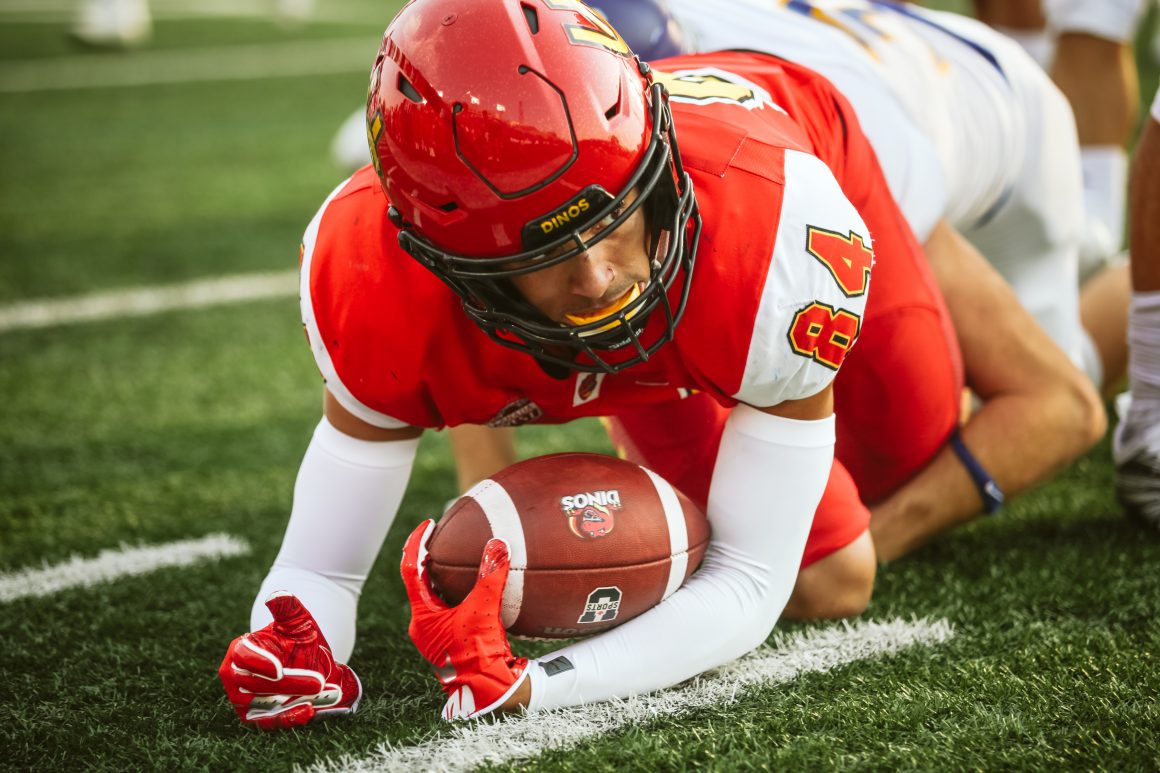
NFL pledges funds for U of C’s concussion research program
By Kristy Koehler, November 22 2018 –
Football has long been under fire for its high rates of player concussions. Professional leagues have responded, instituting new policies and rules to minimize traumatic head injuries. The Canadian Football League recently eliminated contact in practices and instituted an extra bye week to help reduce risk of player injury. The National Football League added a ‘use of helmet’ rule to prevent a player from lowering his head and making contact with his helmet against an opponent, in addition to a controversial ‘roughing the passer’ rule, designed to reduce excessive force towards the quarterback.
The NFL made an off-field move to advance progress in sports-related injury research with their “Play Smart, Play Safe” initiative, pledging $35 million in funding to institutions focused on this research, as well as prevention and treatment.
The University of Calgary was one of only five institutions in North America — and the only Canadian one — to receive this funding. The NFL awarded $12 million to the U of C in order to continue its work in concussion research. The money will be used for the Surveillance in High Schools to Reduce Concussions and Consequences of Concussions in Youth (SHRed) program, led by Faculty of Kinesiology researcher Carolyn Emery.
The program aims to better understand concussions so they can be mitigated, the NFL said.
“SHRed Concussions seeks to reduce the burden of sport-related concussions and their consequences across all youth sport populations in alignment with the NFL goal to facilitate the translation of original research into clear clinical end points that help patients and advance understanding of short and long-term effects of concussion,” the NFL said in a statement.
Keith Yeates is the ward chair in Pediatric Brain Injury and the leader of the University of Calgary Integrated Concussion Research Program. He has been studying traumatic brain injury for more than 25 years. How did U of C qualify for the NFL’s funding? According to Yeates, Emery and her colleagues submitted a proposal.
“There was a very competitive process,” said Yeates. “The NFL narrowed them to, I believe, eight, who were invited to San Diego to present the proposals and they then selected five to fund.”
Yeates cites the collaborative nature of the university as one of the reasons why the U of C was selected.
“The thing that has really set us apart in many cases has been the breadth of the science we do which has spanned the gamut from translational preclinical animal models all the way out to public policy and public health,” he said. “And not only do we span that gamut but we have an unusually high degree of collaboration and co-operation amongst the investigators. Our animal modellers speak to the folks who are doing clinical research or speak to the folks who are doing clinical trials or speak to the folks who are interested in health policy.”
The clinical nature of the U of C helps, as Yeates describes the school’s science as “patient-focused.” Part of that comes from the U of C’s close relationship with Alberta Health Services.
Of SHRed, Yeates said that it’s a “big project with lots of moving parts.”
“It’s an ambitious, pan-Canadian program recruiting upwards of 6,000 high school students who are participants in high risk sports — things like hockey, rugby, football, soccer, basketball, ringette — sports that put kids at elevated risk of concussion,” he said. “The platform of SHRed provides an opportunity to look at primary prevention through a variety of different mechanisms whether it be rule changes, equipment and the like, but also to try to understand the factors and use technology, as a better way to try and differentiate concussion from other injuries and to predict outcomes.”
The Faculty of Kinesiology recently climbed the ladder of ShanghaiRanking’s Global Ranking of Sport Science Schools and Departments, taking seventh place out of 372 universities — and the top spot in North America. While Yeates technically is employed by the Faculty of Arts, he praised the Faculty of Kinesiology, agreeing with the ranking wholeheartedly.
“As an outside observer I’d say it has to do with having some outstanding scientists, a dedicated dean who has done a lot to raise the visibility of the program, a lot of collaboration between different groups in the school and also the fact that the school’s faculty are good collaborators across campus,” he said. “I see the NFL grant as putting the stamp of approval on what we’ve done to date and now we’ll just keep doing bigger and better things.”
Yeates sees the NFL’s contribution to concussion research as a positive and hopes that other leagues will follow suit.
“We certainly see it as a positive thing that the NFL is putting their money where their mouth is in terms of investing in research for concussions,” he said. “We hope they’ll continue to do that.”
